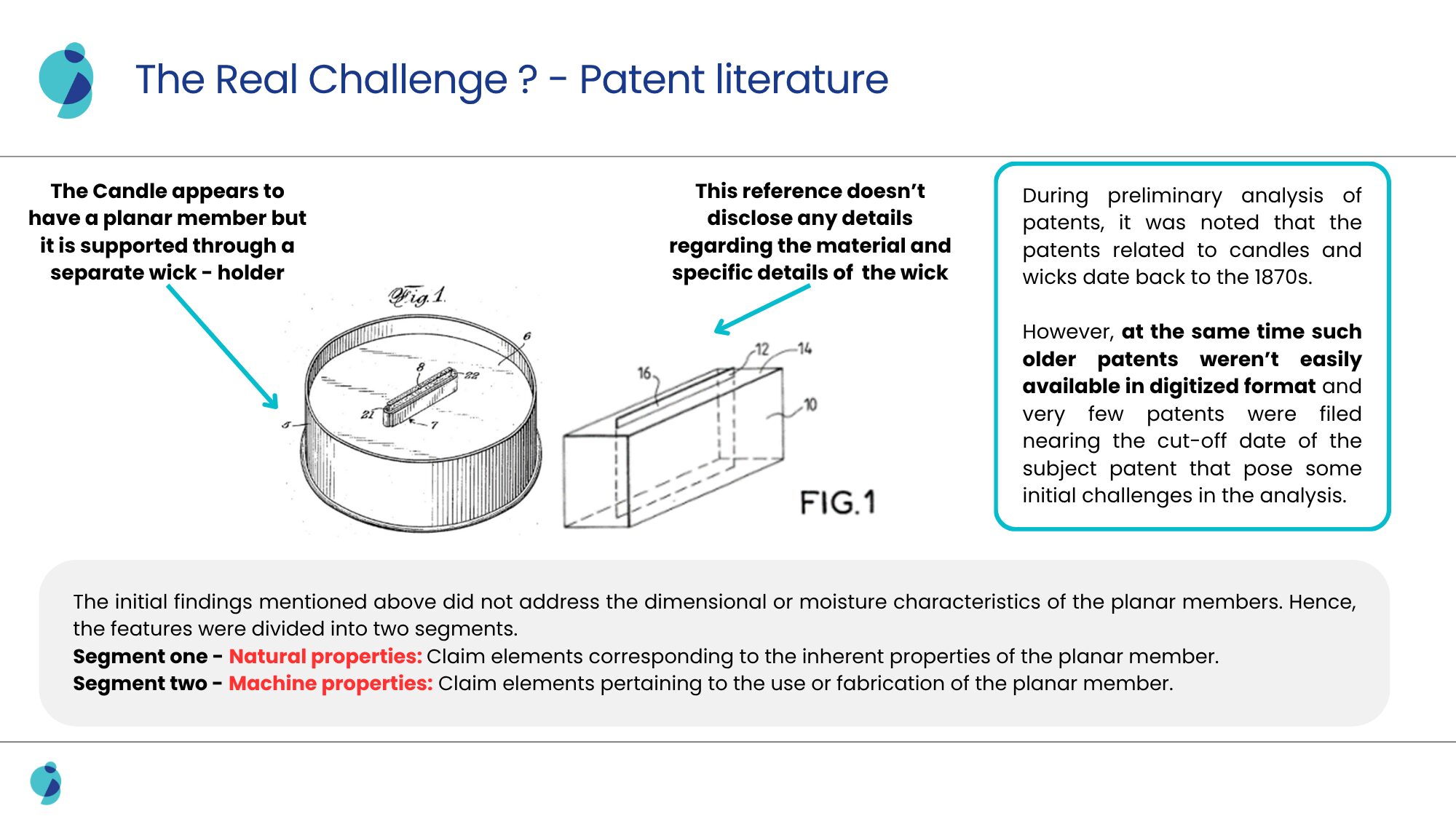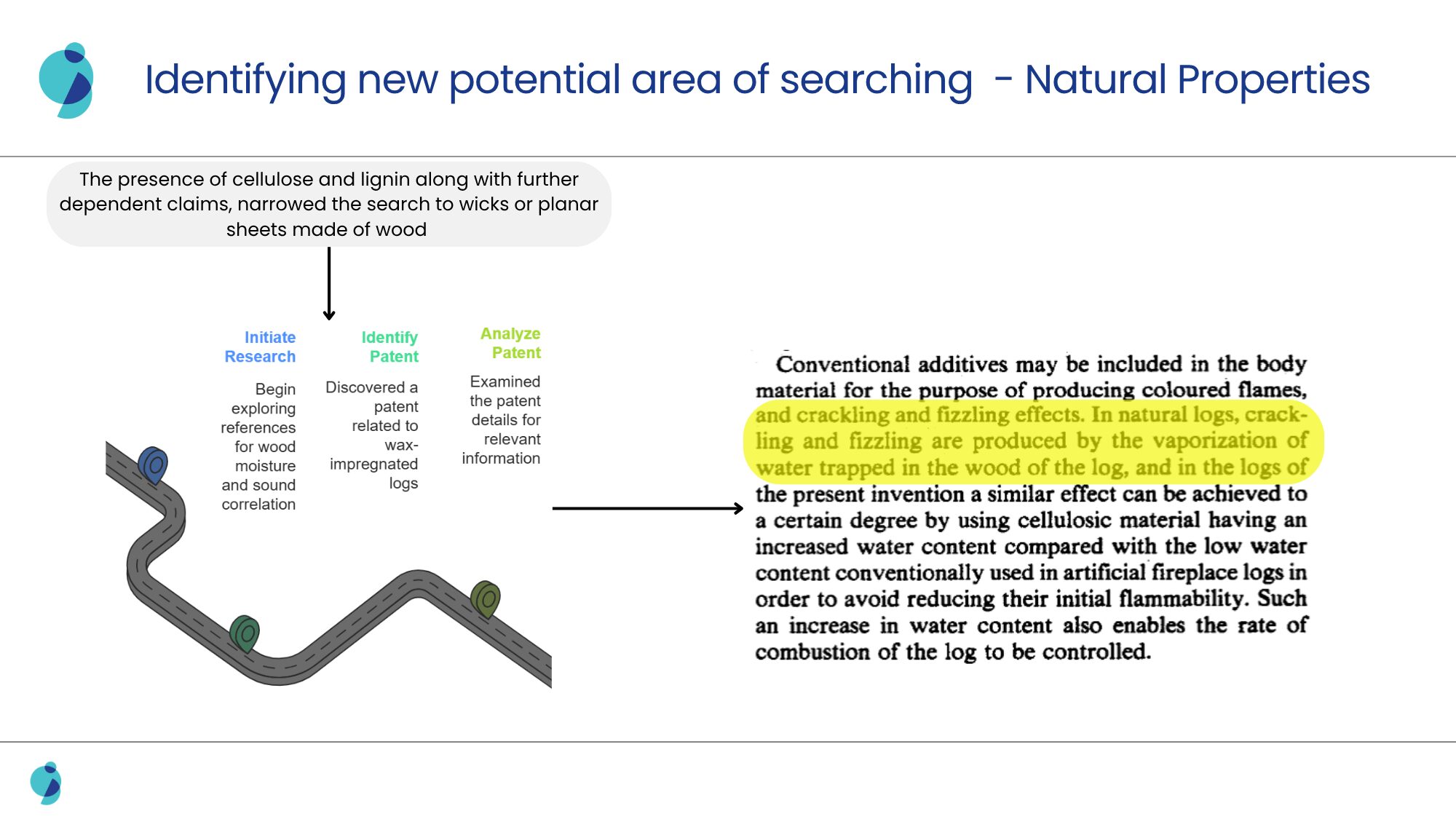
Value Delivered
Top-tier prior art was identified by establishing that the crackling sound of the patented candle resulted from a natural phenomenon in wood, not technical innovation. This equipped the client with strong invalidation arguments to secure a favorable outcome in the case.
Problem Solved
The patent under scrutiny described a candle with a planar wooden wick that made a distinctive crackling sound. The patent claimed that the sound was a novel technical feature of the wick design. The wooden wick sample used during the examination of the patent did not include any measurable data on the moisture content in it. The information was important as moisture was the real reason wood crackled when it burned. This oversight inflated the market valuation of the patent.
During preliminary analysis, it was noted that the patents related to candles and wicks date back to the 1870s. These older patents weren’t easily available in digitized format, hindering the prior art search.



Solutions Offered
Team had to separate claim elements into natural and machine-based categories to progress the research. Scientific and patent references were identified explaining how moisture in wood naturally produces crackling sounds when burned. Meanwhile, multiple wood veneer sellers were investigated to prove that thin wood sheets with vertical grain orientation used in the patented candle were publicly available before the cut off date.
The team also identified a reference describing a wax-impregnated planar body used as a fire kindling stick, similar to the patented candle.
By mapping these natural and machine properties together, GreyB proved that patented wick design lacked inventive distinction and that the crackling sound emerged from a natural phenomenon.
Get the full case study to discover how Greyb invalidated a candle patent using scientific properties of the wood.
Request Full Case Study
Download in PDF Format and read anytime. Fill the form to get access to this article.














